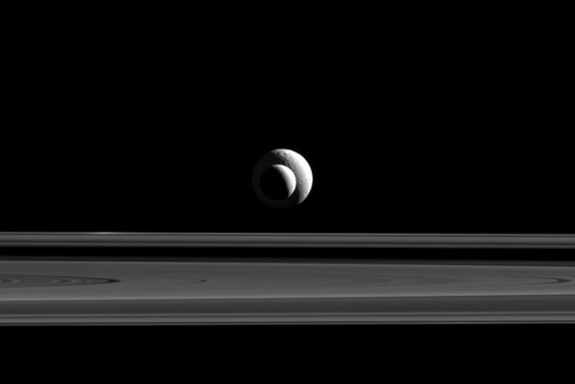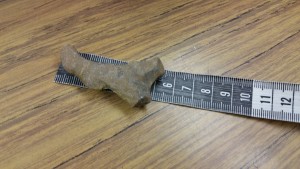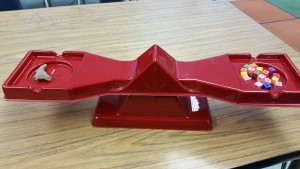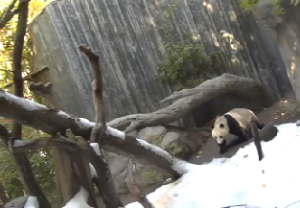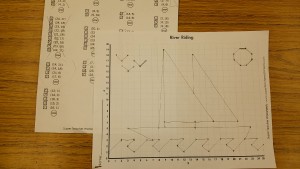For a virtual microscope, go here.
Space Practice
Saturn Moons Align (Almost) to Perfection: Photo
There are few views in Saturnian orbit that are more satisfying than seeing two or more moons in the same frame — particularly when they align.
Waves
This week I did similar lessons with K-3rd, but adapted for the grade level. It was very interesting to watch the difference between the different grade levels and I think was valuable to all. Waves and energy are currently a 3rd grade science standard, but will soon be moving to first grade, so this is why I decided to use this activity with all K-3rd students.
What is a wave? We see waves in the ocean, but is that really the only type of wave?
Here are some items that students experimented with to make “waves”.
Here is also a video of Lego people forming a wave.
So what is the pattern we see?
Student drew a before diagram and after diagram of the pattern.
Measuring Rocks
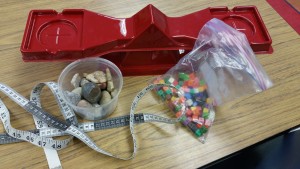 In the science lab, we have many tools that we use, and here are some of the tools that students will be practicing with:
In the science lab, we have many tools that we use, and here are some of the tools that students will be practicing with:
- balance scales
- measuring tapes
- “centicubes” (gram blocks)
- items to measure – in this case, rocks
Students need to practice these skills:
- to only put ONE rock on one side of the balance scales
- when to stop adding more gram blocks
- when to take off extra gram blocks
- to count – and some of the rocks are over 50 grams, so this can be tricky for some of our youngest students
- to recognize balance
- the end of the measuring tape is zero – even if there is no zero shown
- to make sure the rock (or object) is at the zero to start
- to know length, width, and around
- to record their measurements (with kinder, we first start with just practicing how to measure)
Here are a couple interactive websites or online games:
Plate Tectonics
Videos:
National Geographic Plate Tectonics
Questions:
- What did the Tharp-Heezen Map show?
- What is the asthenosphere?
- How is the Mid-Ocean Ridge formed? What kind of boundary is the Mid-Ocean Ridge?
- How was Iceland formed? What was it before?
- There are two types of convergent boundaries (where plates come together). How are they different?
- In Cyprus, what was discovered at the plate boundaries between the African plate and the Eurasian plate? How did this happen?
Bill Nye Video: Earth’s Crust
Interactive Websites:
- Plates and Boundaries from Annenberg
- Plate Boundaries from the American Museum of Natural History
- Plate Boundaries from PBS
- Tectonic Plates, Earthquakes and Volcanoes
- Mountain Maker, Earth Shaker
- San Andreas Fault Map
More Videos
- PBS Plate Tectonic Intro
- PBS Plate Tectonics Early Evidence
- PBS The Hawaiian Archipelago
- PBS Lake Mead, Nevada
- PBS The Scientist Behind the Theory of Plate Tectonics
San Diego Zoo’s Panda Cam
Graphing Coordinates
On November 2nd, 4th and 5th graders were given the job of finding locations of earthquakes and volcanoes on a map by using coordinates. They struggled with understanding the process behind this, so this week we took a step backwards to practice how to find coordinates on a grid. After graphing the points on the grid and connecting them, it made a picture. Many students asked “why are we doing math in science?” to which I replied that the two were linked and that scientists often need to keep data, and that data often needed to be figured out by using math. They HAVE done math before in the science lab, so this really is not anything new, but this time the lesson was specifically math in order for them to be able to continue with our earthquake and volcano mapping. Here is the picture that we made using coordinates:

